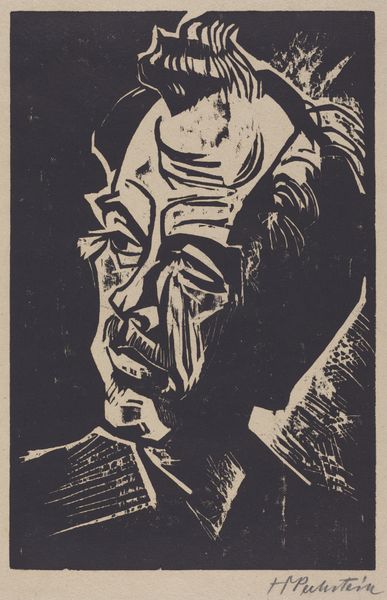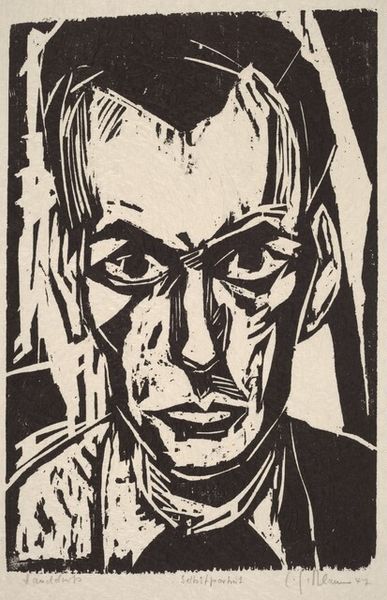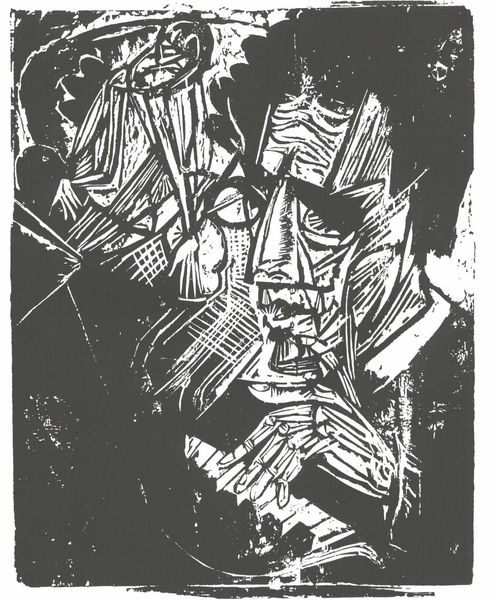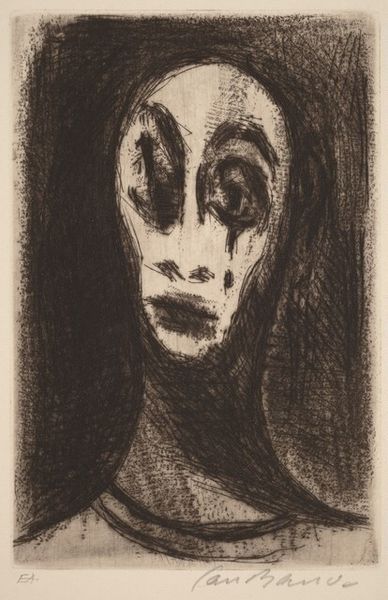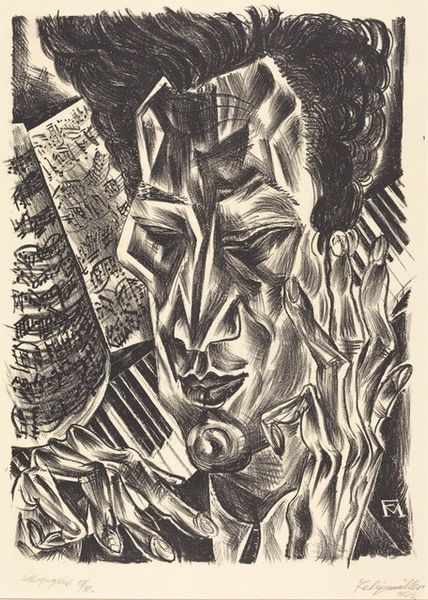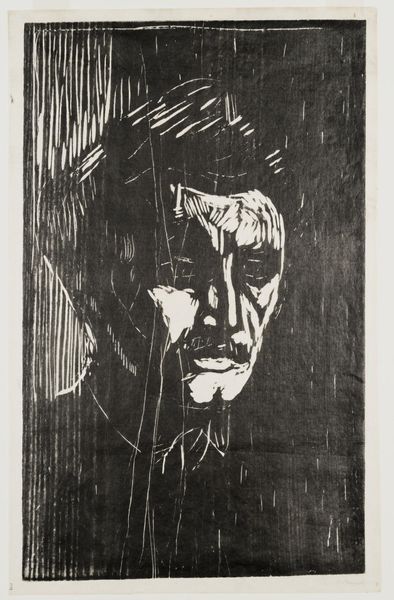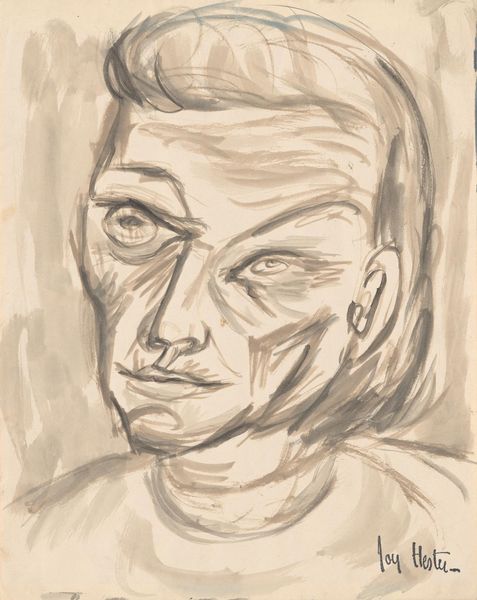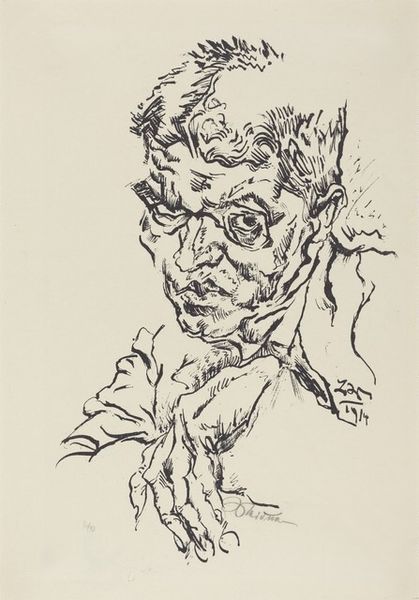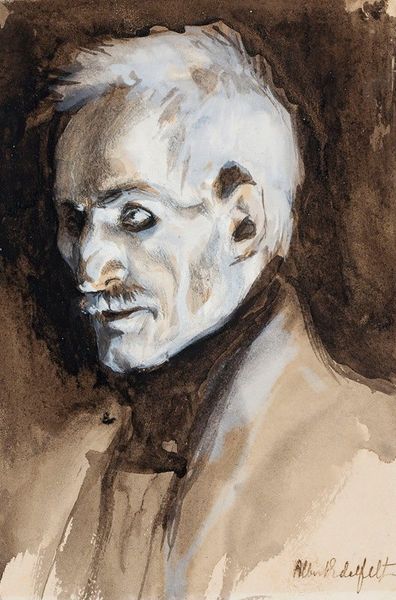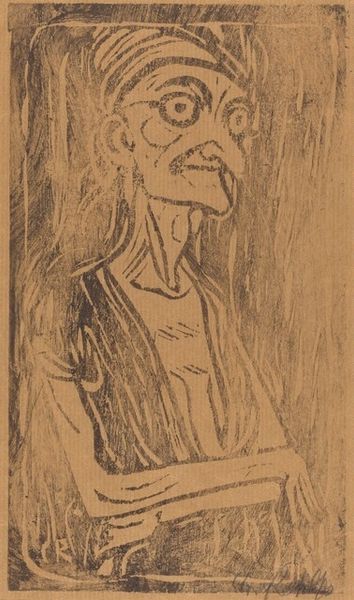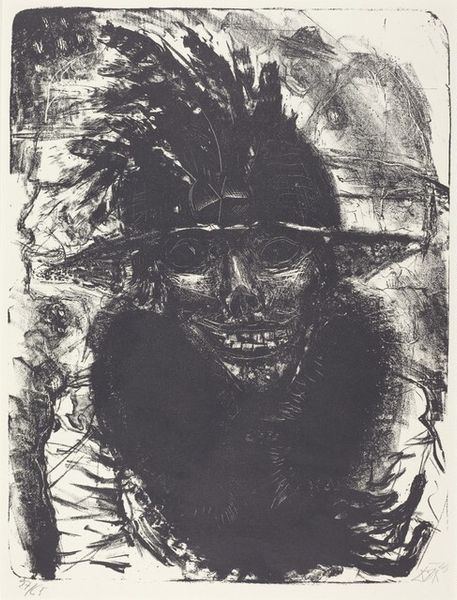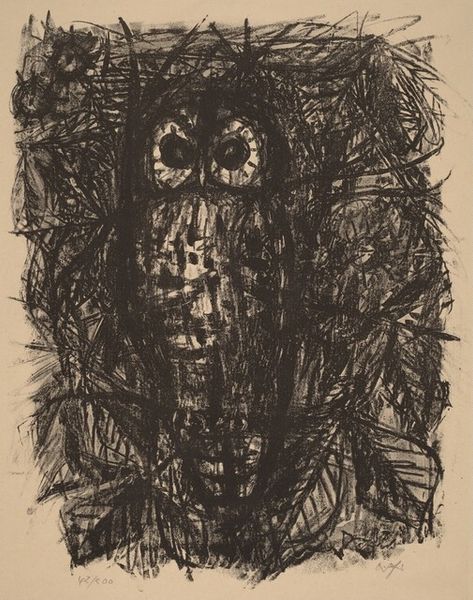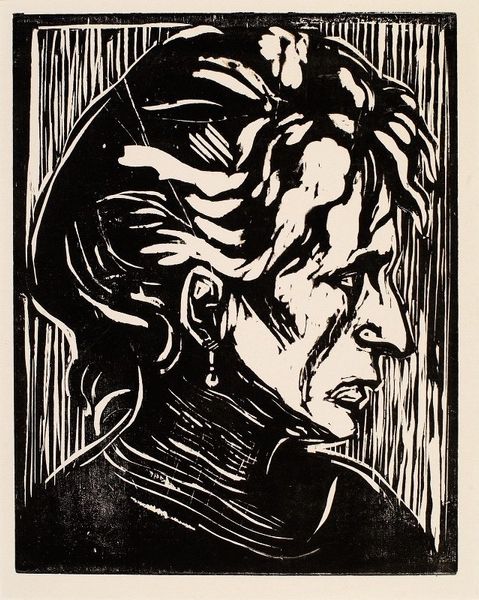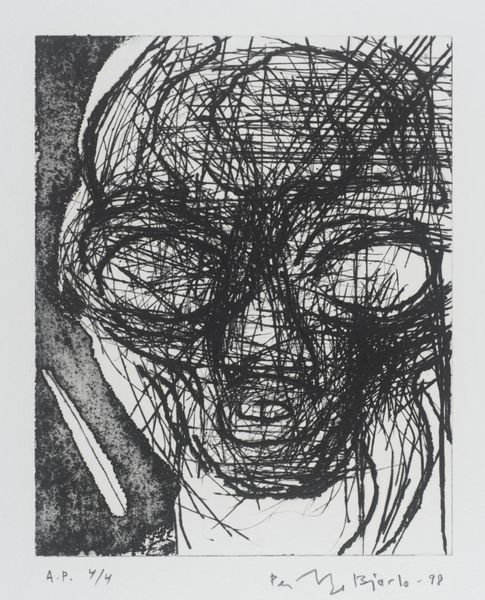
Dimensions: image: 33.8 x 30.6 cm (13 5/16 x 12 1/16 in.) sheet: 56 x 45.5 cm (22 1/16 x 17 15/16 in.)
Copyright: National Gallery of Art: CC0 1.0
Editor: Here we have Erich Heckel’s "Männerkopf (Self-Portrait)" from 1965, a charcoal drawing. I’m struck by the stark contrast and the unsettling gaze of the figure. What do you make of its visual language? Curator: Indeed, the high contrast achieved through charcoal creates a striking visual. Note how Heckel utilizes the medium to construct a network of lines, almost dissecting the subject's face. Observe the interplay of light and shadow—how does it shape your perception? Editor: I see it now! The shadows emphasize the contours of his face, highlighting his age and perhaps even a sense of weariness. Is the chaotic background relevant or merely compositional? Curator: The background elements, reminiscent of a skeletal forest, introduce visual dissonance. They function less as representational space and more as an extension of the subject's psychological state, wouldn't you agree? Notice the way these shapes repeat the lines around the figure's head. Editor: Absolutely! The harsh lines and chaotic background amplify the feeling of unease and internal struggle. It makes me wonder how Heckel was feeling at the time. Curator: The raw and unfiltered style epitomizes the expressionist idiom. In this work, we are invited not just to look at a portrait, but to decipher its structure and composition and understand how Heckel achieves psychological impact through formal means. Editor: I’ve never thought about Expressionism this way before. Seeing it through the lens of pure visual components makes it almost scientific! Curator: Precisely! And understanding the 'science' enhances our appreciation.
Comments
No comments
Be the first to comment and join the conversation on the ultimate creative platform.
